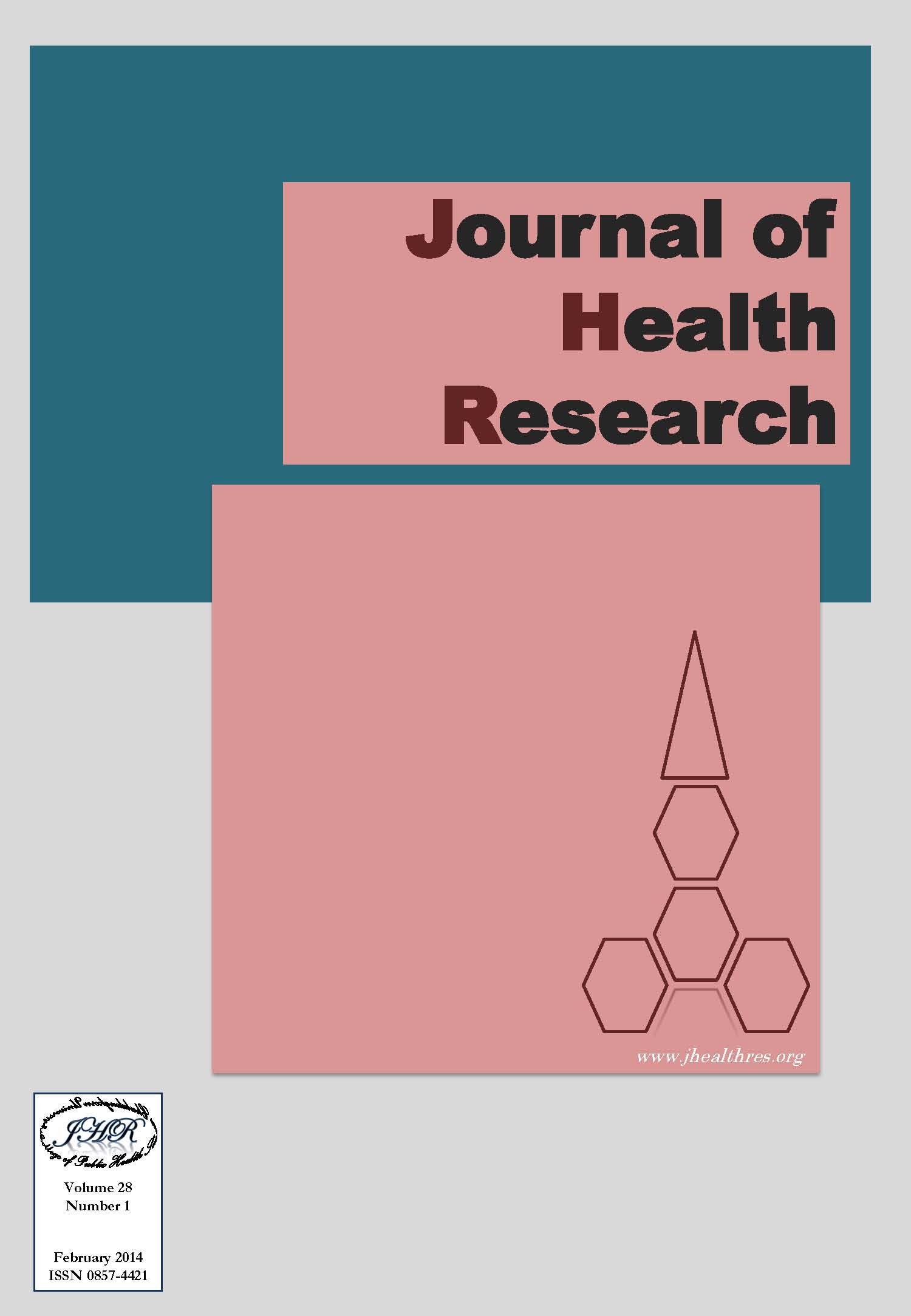Respiratory Effects among Non-Smoking Women in Relation to Household Cooking Fuel Uses in Tu Liem Suburban District, Hanoi, Vietnam
Keywords:
Respiratory symptoms, Beehive coal, Liquefied petroleum gas, VietnamAbstract
This study, conducted in Tu Liem District, Hanoi, Vietnam, evaluated respiratory health in women in relation to cooking fuel use and potentially relevant socio-demographic characteristics and house condition-related. This was a cross-sectional study with the participation of 402 non-smoking women who were sampled equally in 3 groups, which were liquefied petroleum gas (LPG) but not beehive coal use, beehive coal but not LPG use and both LPG and coal use for cooking. Information related to cooking fuel practices, house conditions, socio-demographic factors and six respiratory outcomes including cough for one month or more, phlegm for one month or more, both cough and phlegm for 1 month or more, shortness of breath (SOB) when hurrying on level ground, wheeze with SOB in adulthood, and current COPD were collected by interview structured questionnaire, a modified version of the American Thoracic Society Questionnaire (adult version). In descriptive findings, there were 16.2%, 12.2% and 11.9% respondents having cough, phlegm and both cough and phlegm for one month and more respectively. SOB when hurrying on level ground, wheeze with SOB and current Chronic Obstructive Pulmonary Disease (COPD) was observed in 60.2%, 24.4% and 19.9% non-smoking women in study sample. In bivariate analysis findings, respiratory outcomes were positively associated with current of fuel use; and had strongly positive relationship with number of years using beehive coal and biomass (p<0.001), dampness and mould in house (p<0.001); and several socio-demographic factors. Meanwhile, respiratory outcomes negatively associated with distance of house location to main road and farmland (p<0.01) and cooking time per day with LPG. Exposure to LPG or fumes in workplace, quantity of beehive coal briquettes used per month and cooking time with beehive coal had positive association with the prevalence of several respiratory symptoms and illness. Clearly, current beehive coal use for cooking and history of beehive coal and biomass use significantly contributed to the risk of respiratory symptoms and illness. Appropriate interventions to reduce solid fuel smoke exposure, and improve respiratory health should be considered.Downloads
How to Cite
Hanh, N. T. M., Chapman, R. S., Havanond, P., & Kanchanakhan, N. (2017). Respiratory Effects among Non-Smoking Women in Relation to Household Cooking Fuel Uses in Tu Liem Suburban District, Hanoi, Vietnam. Journal of Health Research, 28(1), 1–8. retrieved from https://he01.tci-thaijo.org/index.php/jhealthres/article/view/92845
Issue
Section
ORIGINAL RESEARCH ARTICLE







